[Newsbits] 2-4.03.2024: International Big Cat Alliance (IBCA), Spaceports in India & More

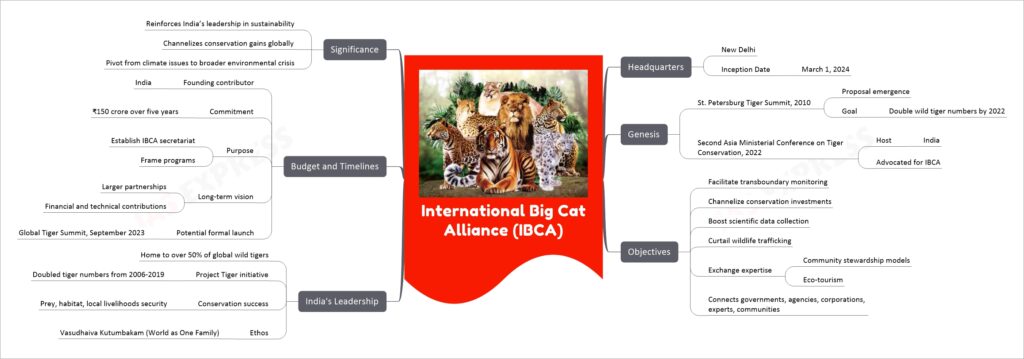
The International Big Cat Alliance (IBCA), initiated by India’s Environment Ministry and approved on March 1, 2024, represents a strategic intergovernmental effort to foster global tiger conservation. Headquartered in New Delhi, the IBCA is inspired by the International Solar Alliance and aims to emulate its success in the realm of wildlife conservation. Emerging from the St. Petersburg Tiger Summit in 2010, the alliance’s core objective is to enhance global collaboration for doubling wild tiger populations by facilitating transboundary monitoring, channeling investments into tiger habitats, boosting scientific data collection, curtailing wildlife trafficking, and exchanging expertise on community stewardship and eco-tourism. India, housing over 50% of the world’s wild tigers, plays a pivotal role through its successful Project Tiger initiative, demonstrating significant conservation achievements. With a commitment of ₹150 crore over five years, the IBCA seeks to establish a secretariat and frame conservation programs, aiming for a larger global partnership to address the broader environmental crisis threatening key ecosystems.
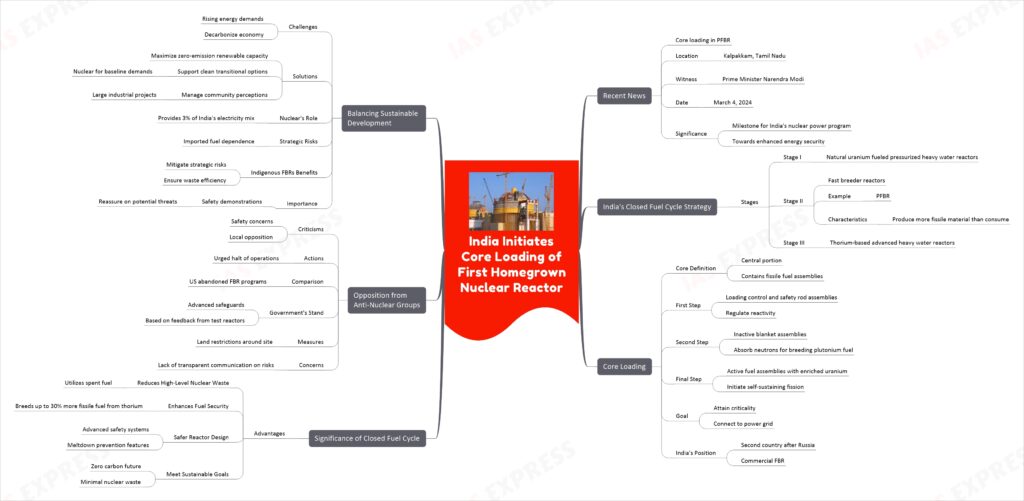
India’s first indigenous Prototype Fast Breeder Reactor (PFBR) in Kalpakkam, Tamil Nadu, marks a significant advancement in the country’s nuclear energy capabilities. With Prime Minister Narendra Modi witnessing the core loading activities, this development is pivotal for India’s three-stage nuclear power program, aimed at enhancing energy security through a closed fuel cycle strategy. This strategy includes utilizing spent fuel to reduce waste, breeding more fissile material, and advancing towards a zero carbon future with minimal nuclear waste, thereby supporting sustainable energy goals. Despite facing opposition over safety concerns, the project underscores India’s commitment to balancing rising energy demands with the need to decarbonize, highlighting the strategic importance of indigenous nuclear technology in ensuring fuel security and environmental sustainability.
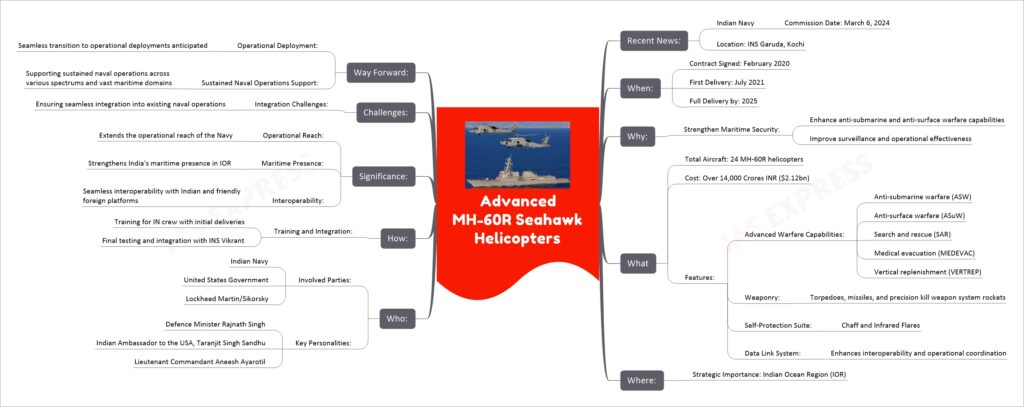
The Indian Navy’s commissioning of MH-60R Seahawk helicopters symbolizes a significant enhancement in maritime security capabilities, specifically in anti-submarine warfare and surface warfare, along with improved surveillance, search and rescue, and medical evacuation capabilities. The procurement of 24 advanced helicopters from the US, under a deal worth over 14,000 Crores INR ($2.12 billion), is set to extend the Navy’s operational reach, especially in the strategic Indian Ocean Region. This integration into the Navy’s fleet, with the commissioning scheduled for March 6, 2024, at INS Garuda in Kochi, is a critical part of India’s defense modernization, aiming to bolster its maritime security and ensure seamless interoperability with Indian and international naval forces.
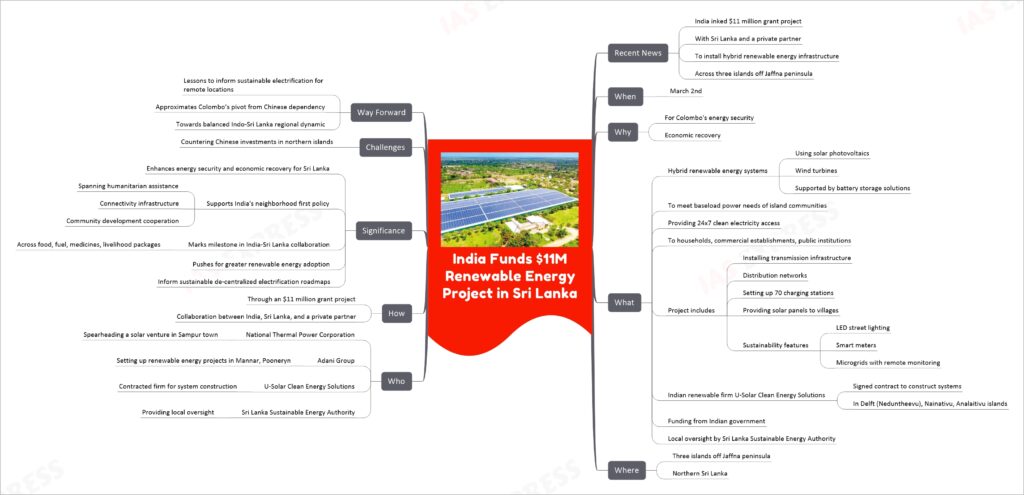
The project involves India granting $11 million to Sri Lanka, in collaboration with a private partner, to install hybrid renewable energy systems across three islands off the Jaffna peninsula in northern Sri Lanka. This initiative aims to bolster Sri Lanka’s energy security and aid in its economic recovery, marking the third India-backed energy project in the region. The effort supports India’s “neighborhood first” policy, emphasizing humanitarian assistance, connectivity, and community development cooperation during Sri Lanka’s challenging transition. By focusing on sustainable energy infrastructure, the project also reflects India’s commitment to promoting renewable energy adoption and could serve as a model for decentralized electrification in remote areas, including within India itself.
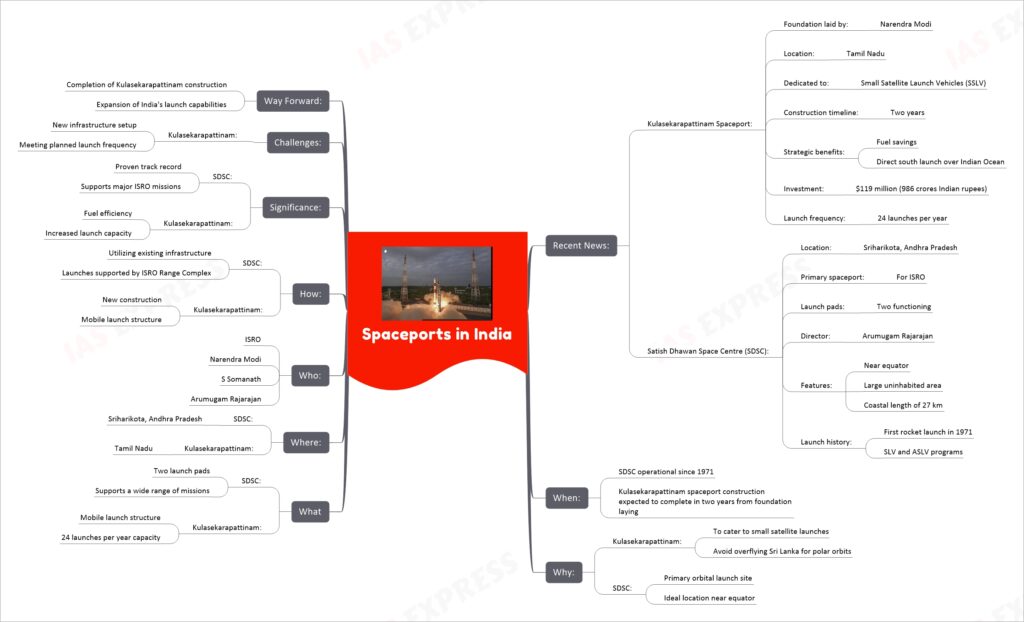
India is enhancing its space launch capabilities with two major spaceports. The Satish Dhawan Space Centre (SDSC) in Sriharikota, Andhra Pradesh, has been operational since 1971, serving as India’s primary orbital launch site. It benefits from its near-equatorial location, which is ideal for launching satellites into space due to the Earth’s rotational speed boost. The centre has two functioning launch pads and has witnessed significant launches, including India’s lunar exploration probes.
On the other hand, India is constructing a new spaceport in Kulasekarapattinam, Tamil Nadu, dedicated to launching smaller launch vehicles with an investment of $119 million. This spaceport aims to conduct 24 launches per year using a mobile launch structure and is expected to be completed in two years. The new facility will cater to the increasing demand for small satellite launches, offering strategic benefits such as fuel savings and the ability to launch directly south over the Indian Ocean. This expansion reflects India’s growing participation in global space developments and its ambition to become a significant player in the space industry.

The Rooftop Solar Scheme in India, formally known as the Pradhan Mantri Suryodaya Yojana, was launched by Prime Minister Narendra Modi with the aim of installing rooftop solar panels on 10 million households across the country. Announced in January 2024, the scheme targets reducing electricity bills for the poor and middle class while promoting energy self-reliance in India. Beneficiaries are promised up to 300 units of free electricity monthly, with the government investing over Rs. 75,000 crores in this initiative. Eligible households must meet certain criteria, including being permanent citizens of India, over 18 years old, owning a house, possessing necessary documents, and having an annual income below a specified threshold. The scheme represents a significant step towards enhancing the utilization of renewable energy sources within India, aiming to alleviate financial burdens on households and contribute to the country’s energy security.
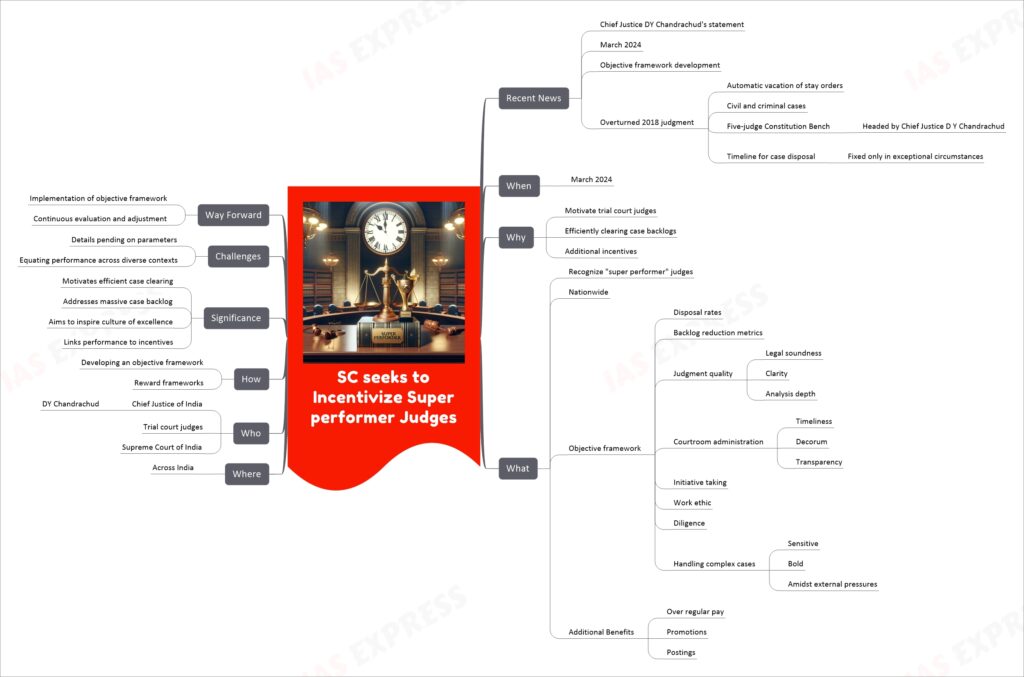
The Supreme Court of India, under the leadership of Chief Justice DY Chandrachud, is planning to introduce an objective framework to identify and incentivize “super performer” judges within the trial courts across India. This initiative, announced in March 2024, aims to address the massive backlog of over 4.5 crore cases by motivating judges to efficiently clear cases through additional incentives. The criteria for recognizing these high performers are expected to include disposal rates, judgment quality, courtroom administration, initiative, work ethic, and the ability to handle complex cases. This move is seen as a significant step towards inspiring a culture of excellence in India’s lower judiciary and linking performance with incentives, providing a higher purpose for judges contributing significantly to backlog reduction.
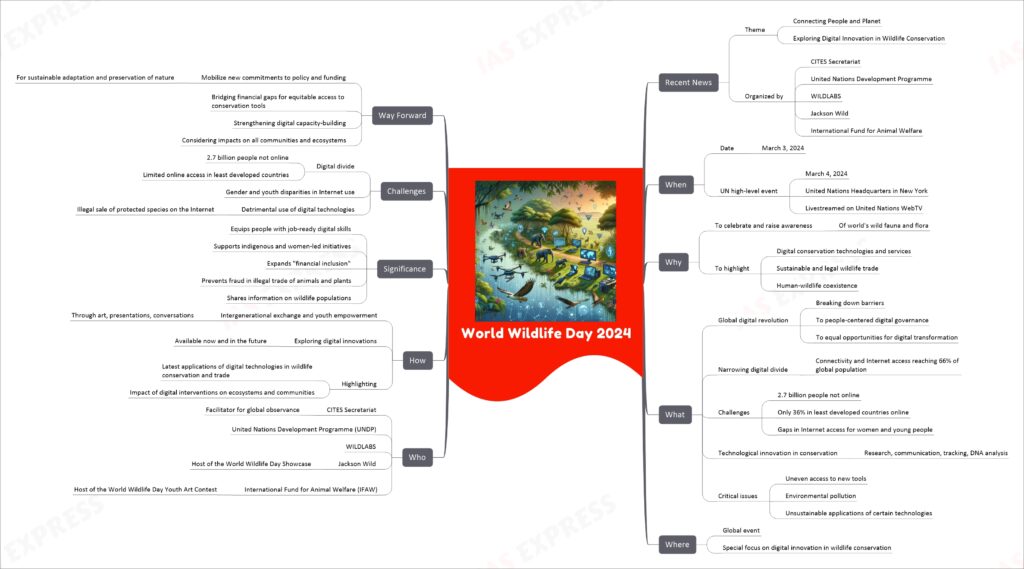
World Wildlife Day 2024 focuses on the theme “Connecting People and Planet: Exploring Digital Innovation in Wildlife Conservation.” It aims to highlight the role of digital technologies in wildlife conservation, sustainable trade, and fostering human-wildlife coexistence. Organized by the CITES Secretariat, this year’s event underscores the importance of digital transformation in addressing environmental challenges and ensuring the protection of biodiversity for future generations. The initiative also emphasizes intergenerational exchange, youth empowerment, and bridging the digital divide to ensure equitable access to conservation tools and technologies.
If you like this post, please share your feedback in the comments section below so that we will upload more posts like this.
